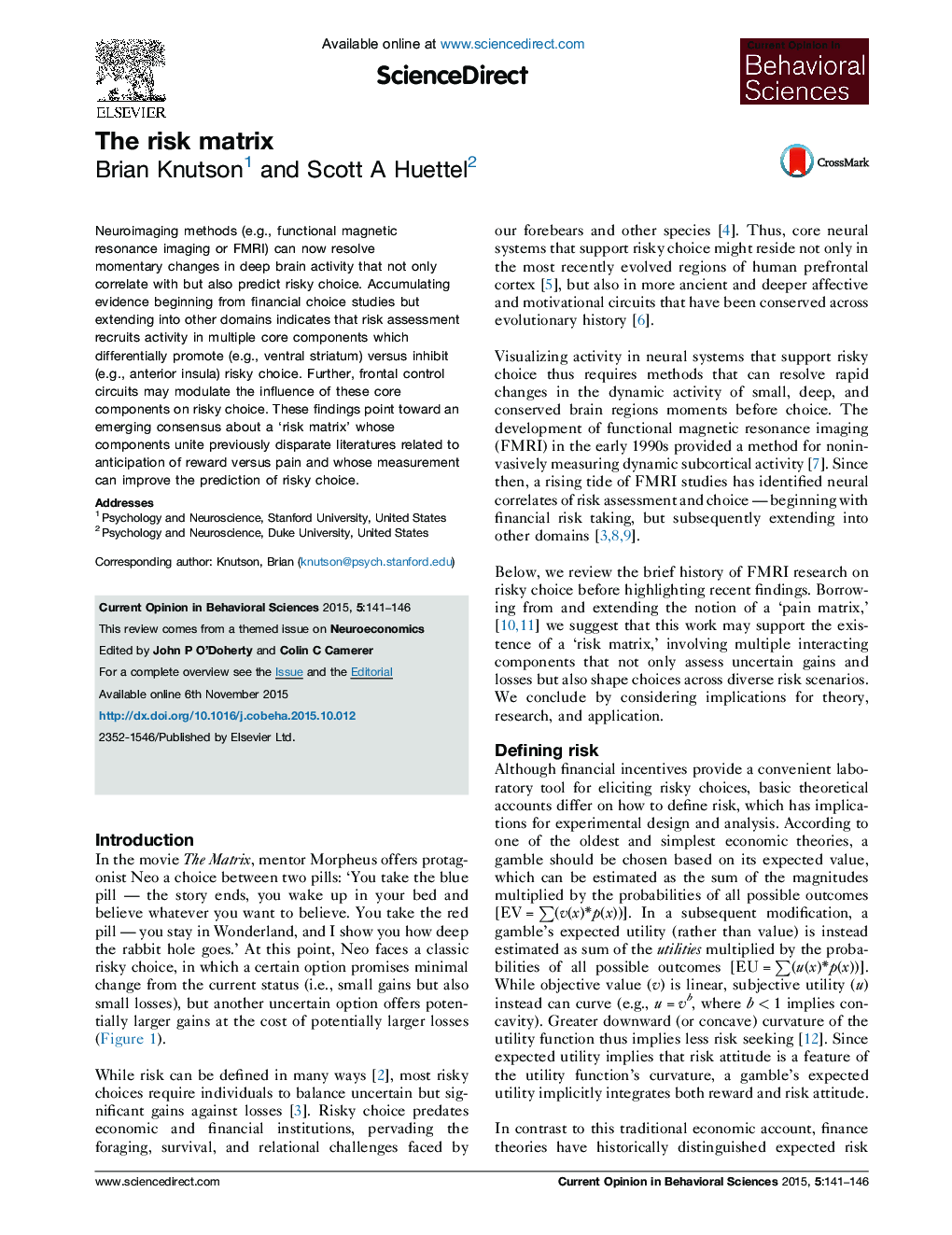| Article ID | Journal | Published Year | Pages | File Type |
|---|---|---|---|---|
| 6260867 | Current Opinion in Behavioral Sciences | 2015 | 6 Pages |
â¢Risk assessment activates multiple core components (ventral striatum and anterior insula).â¢Activation of these components differentially promotes (ventral striatum) versus inhibits (anterior insula) risky choice.â¢Frontal control circuits may modulate the influence of this 'risk matrix' on choice.
Neuroimaging methods (e.g., functional magnetic resonance imaging or FMRI) can now resolve momentary changes in deep brain activity that not only correlate with but also predict risky choice. Accumulating evidence beginning from financial choice studies but extending into other domains indicates that risk assessment recruits activity in multiple core components which differentially promote (e.g., ventral striatum) versus inhibit (e.g., anterior insula) risky choice. Further, frontal control circuits may modulate the influence of these core components on risky choice. These findings point toward an emerging consensus about a 'risk matrix' whose components unite previously disparate literatures related to anticipation of reward versus pain and whose measurement can improve the prediction of risky choice.
